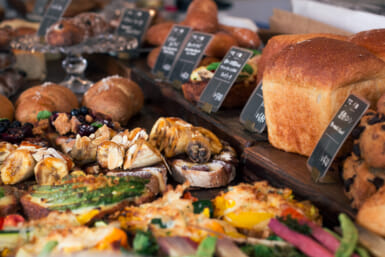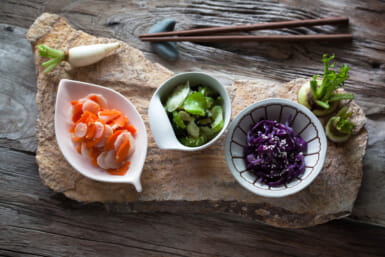Japanese chefs—at last—get that ‘French taste’
When I began to write this column about 11 years ago, I was convinced that Japanese chefs would never be able to master French cuisine, no matter how many years they studied it in France.
The idea was based on a neat little theory which neatly ignored genetic factors. It went this way:
From the day he is born, the future French chefs tastebuds are influenced by his environment. First comes his mothers milk which, because of diet, must differ in taste from a French mother’s mammary output. After he is weaned, the food he cats further shapes his palate. How then can a Japanese chef hope to master French cooking when his tongue does not react to flavors in the same way that French tastebuds do?
With the passing years, my opinion underwent a drastic change, as I began to savor some superb French food cooked by Japanese chefs. If there was any lingering doubt as to Japanese capabilities in the kitchen, it was erased after two meals at the ANA Hotel’s Rose Room.
The first was a lunch, where I started off with a rich beef consomme, ¥1,800, and followed it with one of the best roast lambs I have ever tasted. It was served as tender filets in a sauce made from the pan juices, garnished with cheese ravioli. That may sound like an odd combination, but the cheese was mild and able to take on the flavor of the meat, resulting in a dish of complex yet not conflicting tastes.
Since I had to go back to work, I ordered a half-bottle of Chateau Prieurc Lichine, 1980, a well-made gentle Margaux that supported the lamb marvelously. It was ¥6,500.
A chestnut charlotte with a chocolate sauce, ¥1,300, and an espresso, ¥550, ended that fine meal for me.
The next occasion was a dinner, which was made all the more enjoyable by the charming girl at the piano who played selections from Mozart, Chopin and other composers. I decided to begin my meal with a cream of green asparagus soup, ¥1,300. What I especially liked about that soup was the way the chef emphasized the asparagus flavor without diluting its creaminess, an error some chefs make.
I followed the soup with thin slices of roasted duck breast, bathed in the pan juices again and served with a roast duck leg stuffed with mushrooms, ¥6,500. That was a clever idea, for the leg added another dimension of taste that reinforced the flavor of the dish.
Since duck breasts are not shy about asserting themselves on the palate, I chose a Pommard, Clos de la Commaraine, 1981, to go with them. It was ¥18,000 for the full bottle. They got along very well, even though both were full-flavored. They enhanced each other’s flavor. You can’t go wrong with a good Pommard when you have roast duck.
For dessert I had a very toothsome banana mousse with coconut sauce, ¥1,300. Espresso naturally ended the meal.
The restaurant provides set courses for lunch and dinner. When I was there, one luncheon course, called Le Club, was only ¥4,000 and started with a venison terrine, followed by grilled lobster, ending with chestnut croquets and coffee. The second one, called Le Gourmet, was ¥2,000 more expensive and began with a turnip and smoked salmon salad, followed by a grilled entrecote a pear charlotte and coffee.
The two dinner table d’hotes were, logically, far more expensive and contain enough to keep a lumberjack satisfied for a week, though he might not appreciate the flavors. One is ¥10,000 and the other ¥15,000.
The wine list is extraordinary not only for the number of wines, 174, on its roster but also for the vintage charts for red and white Bordeaux and Burgundy wines printed at the top of their listings. No more fishing around the pocket for your vintage chart.
Just check the one on the wine list. All major wine districts in France and Germany are included, as are wines from Italy, Spain, California and Japan. If you want a particular wine, you’ll probably find it there.
The Rose Room is on the second floor of the ANA Hotel on Roppongi-dori. When you enter, you see a sea of white tablecloths and a huge spray of roses in the center of the room. The rose theme continues on the walls. The service is typically Japanese, meaning impeccable.
I cannot end this article without a word about Executive Chef A kirn Kusumi, whose talents produced the meals whose praises merit a better voice than mine. After working in Japanese kitchens to learn the rudiments of cooking he went to France in 1975 and took on-the-job training at Jamin and Grand Vefour in Paris, both great names in the gourmet world. Then he did a stint at the Dorroz in Bordeaux before returning to Japan in 1980 to the Century Hyatt.
In 1986 he went to the Rose Room and, last June, was made head chef, a choice which shows a high degree of perspicacity on the part of the ANA Hotel management.








